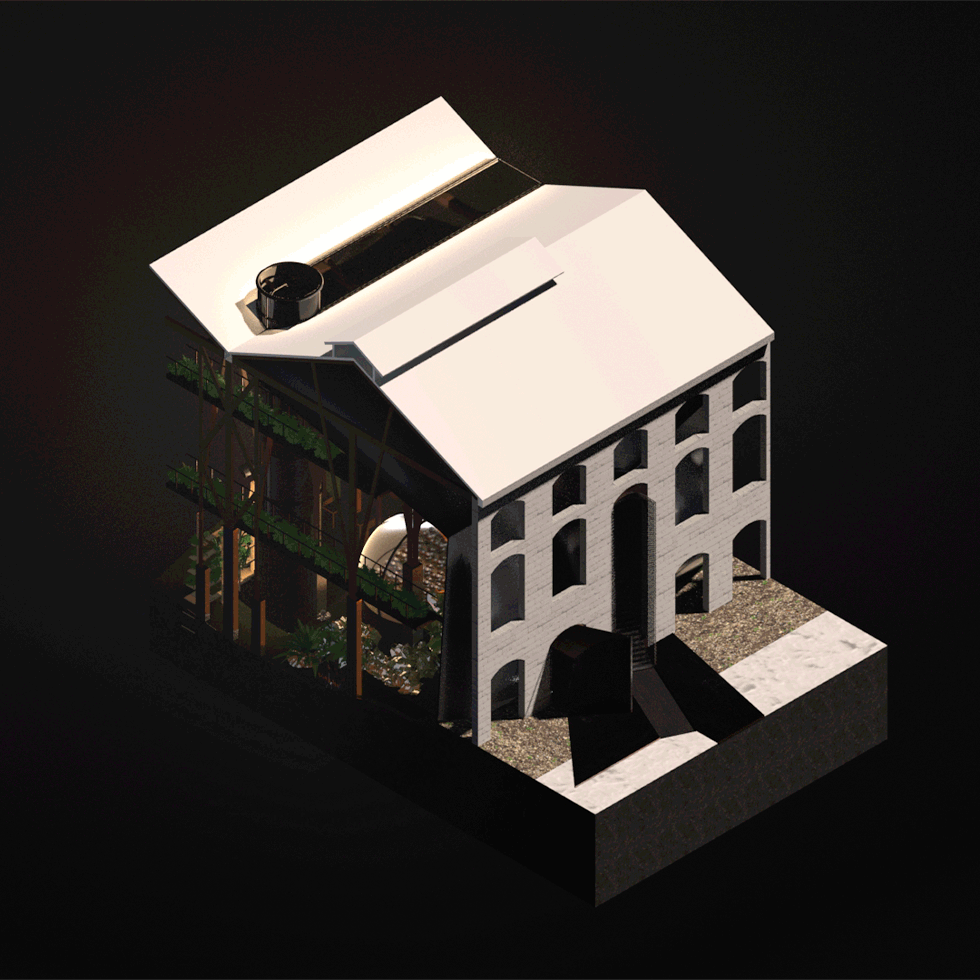in Orbetello
SYMBIOTIC METAMORPHISM
Project by: Ching,Samantha_Man,Emerald


Symbiotic, refers to the long-term interaction between two dissimilar organisms in close proximity.
Metamorphism is the internal reassembly and reorganization that results in physical-chemical changes.
With our eco-resort, humanity and nature can be intertwined together and act as a single organism to adapt to the evolving climatic environment. The assimilation of humanity physically, metaphorically, and chemically using phytoremediation as a mediator allows us to cohabitate, coexist and embrace the site in its most natural state; the state of being TOXIC.
ECO-Toxicology
Nature isn’t quite so “natural” anymore, or at least our perception of it. The anthropocene epoch has heavily impacted the dynamic relationship between nature and humanity into a fight for dominance over one another. With Orbetello’s industrial boom, intensive fishing production industry and tourism, the cyclical manner of toxicity will prevail.
Mithridatism is the practice of protecting oneself against a poison by gradually self administering non lethal amounts. Several scientific studies have shown that the human body can build tolerance to metallic toxins due long term exposure through small doses. This refers to our design as "Mithridatism" - tolerance for humans to live in a toxic atmosphere.

Types of Symbiotic Interactions
Direct Relationship : The circular pathway leads to the immersive lodging creating the area of intimate contact with plants that are harmless to human beings.
Transitory Relationship : A meditation area between the logging and the toxic garden. Indicated that the transition of the lower toxic level to a higher level of toxicity.
The Voyeuristic: The most detached relationship where humans are prohibited to interact with toxic plants. Multiple layers of circulation create the hierarchy of human and toxic plants coexisted.

Phytoremediation Laboratory - A systematic experiment that secure, control, and bonifica the existing site.



Toxic Terrarium. The main attraction of the Eco-Resort.
With naturally toxic elements planted, elevated and immersed into the ground, this space aims to celebrate and romanticize toxicity. The layering of space allows different angles and levels of voyeurism. Pre-existing structures are used to hold these vertical and floating terrariums but also pertains to the movement of visitors within the building. Viewing ports extruded from the existing facade of the building are punctured from the main pathway, through the second skin of EFTE and into the interior greenhouse.They act as a bridge from the exterior to the interior of the building and into the greenhouses. With the expansion of the punctures, occupiable interior spaces are formed. By slightly jutting off the facade and unfolding onto the ground, small structures such as bike storage, seats, and informational exhibitions draw curious visitors inside.


